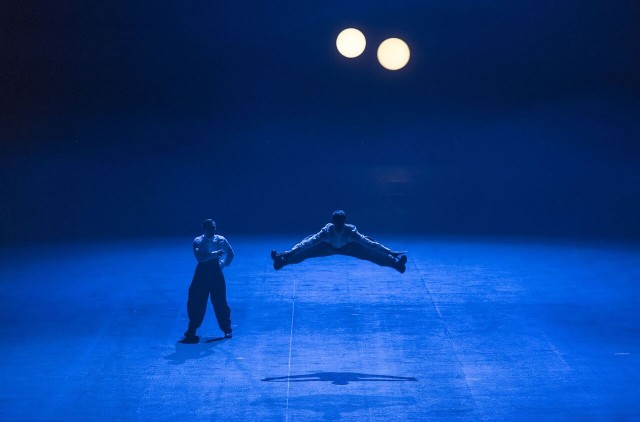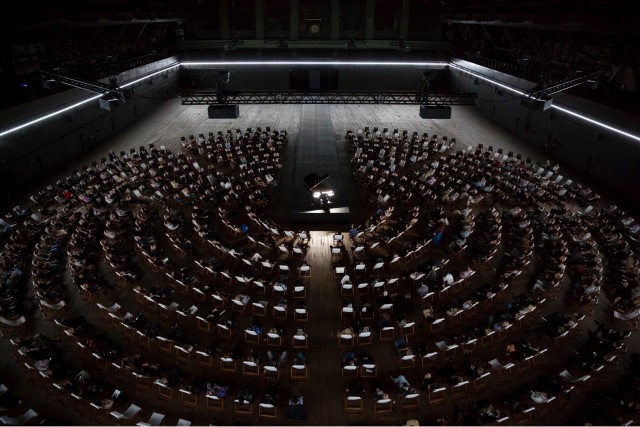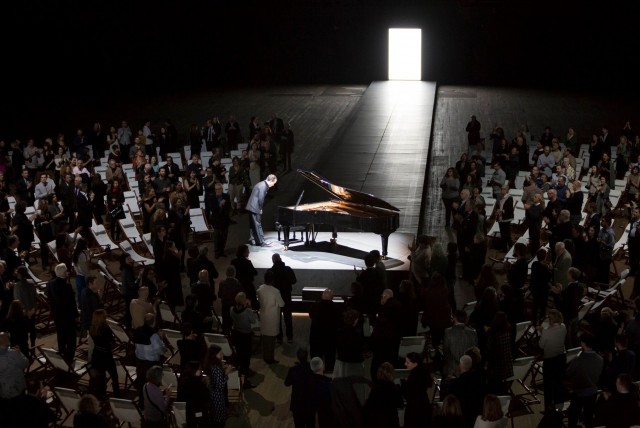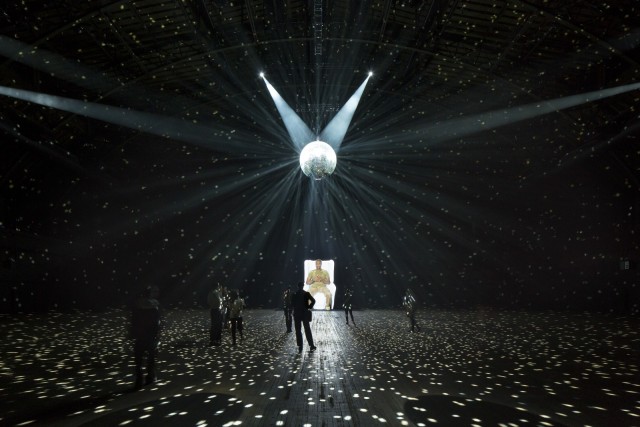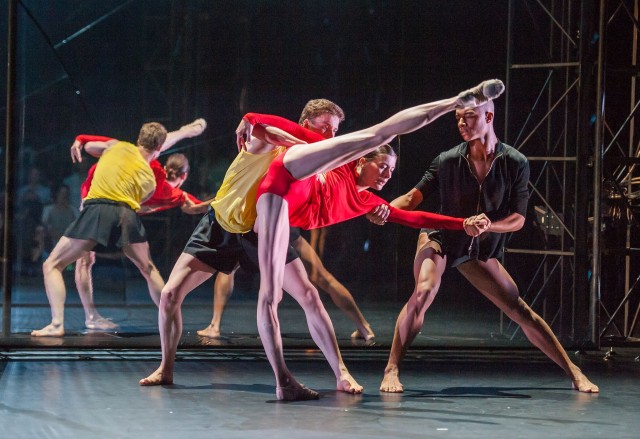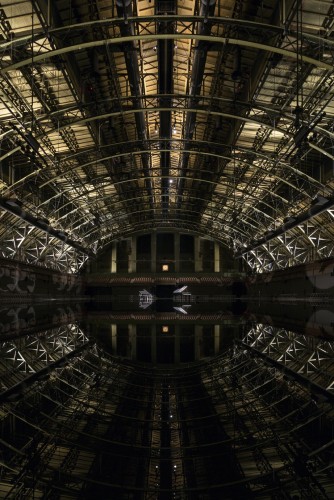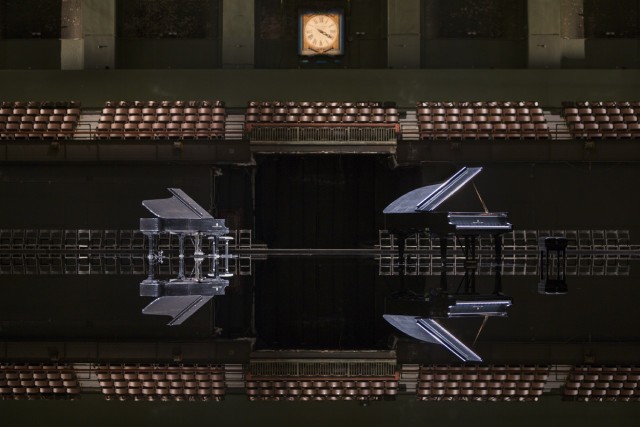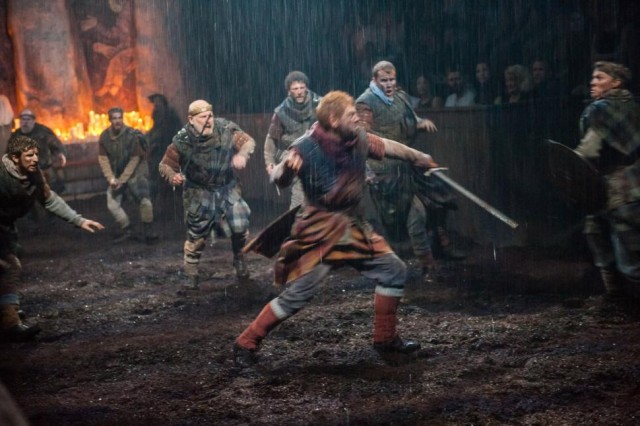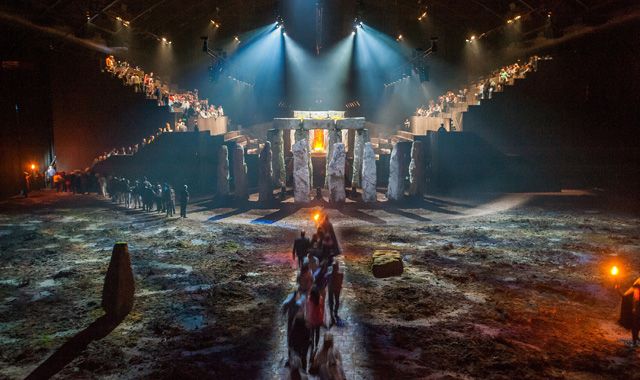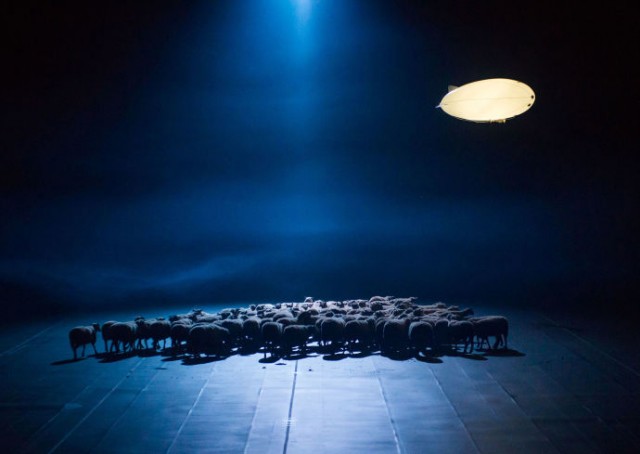
Heiner Goebbels’s adaptation of Louis Andriessen’s DE MATERIE is an audio and visual wonder — complete with sheep and light-up zeppelins (photo by Stephanie Berger)
Park Ave. Armory, Wade Thompson Drill Hall
643 Park Ave. between 66th & 67th Sts.
March 22–30, $85-$195
212-933-5812
www.armoryonpark.org
Regardless of how well prepared you think you are for Heiner Goebbels’s awesomely strange spectacle De Materie, you’re not; get ready to be confused, amazed, bewildered, delighted, mesmerized, and frustrated, often all at the same time. Goebbels’s awe-inspiring version of Dutch new music composer Louis Andriessen’s four-part masterwork, initially presented at the 2014 Ruhrtriennale at a former power plant in Germany, is making its North American stage premiere this month in the Wade Thompson Drill Hall at the Park Avenue Armory, where it fits like a glove. The nearly two-hour work is divided into four very different sections that explore freedom and innovation through the age-old philosophical battle between matter and spirit. De Materie is constructed like an architectural magnum opus of experimental music, dance, art, theater, opera, and science, with many memorable parts that come together to form an ever-greater whole . . . or not, as tenor Pascal Charbonneau explains, intoning passages from Dutch physicist Gorlaeus’s Idea physicae. A small choir sings “Plakkaat van Verlatinghe,” the Act of Abjuration declaring Dutch independence from Spain, and later adds sections from a 1690 primer on shipbuilding (“Aeloude and hedendaegsche Scheepsbouw en Bestier”) by Nicolaas Witsen. Subtitles are projected onto glowing zeppelins, walls, and tents in which silhouettes mysteriously gather.
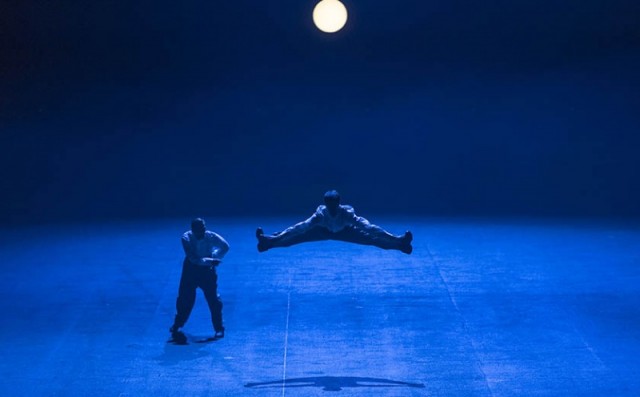
DE MATERIE features music, dance, theater, art, spoken word, philosophy, mysticism, and even boogie-woogie (photo by Wonge Bergmann)
Thirteenth-century devotional mystic poet Hadewijch (soprano Evgeniya Sotnikova) sings of corporeal love with God as black-covered figures on benches behind her change position every time the lights go off and then on again. Piet Mondrian’s 1927 “Composition with Red, Yellow, and Blue” is brought to life with swinging pendulums as Gauthier Dedieu and Niklas Taffner dance the boogie-woogie and the theory of the line is discussed through texts by mathematician and theosophist M. H. J. Schoenmaekers. Madame Curie (Catherine Milliken) reads from her Nobel Prize acceptance speech and the diary she kept following the death of her husband. And one hundred sheep from Pennsylvania bleat from the back of the hall, although no translation is provided. The dramatic, varied score is performed with vigor by the fifty-plus members of the International Contemporary Ensemble (ICE) and ChorWerk Ruhr, conducted by Peter Rundel. The sets and lighting by Klaus Grünberg and sound design by Norbert Ommer are mind-blowing; the fab costumes are by Florence von Gerkan, with choreography by Florian Bilbao. So, when put together, what’s it all about? In his director’s note in the program, Goebbels, who previously presented Stifters Dinge at the armory in December 2009, writes, “Our visual solutions for this piece — tents in the first act, benches in the second, the pendulum in the third, and the sheep in the fourth act — aren’t symbols for something that needs to be deciphered or understood. They all are what they are: tents, benches, pendulum, and sheep — and zeppelins. But what you feel or imagine about them — that is your business alone. Just don’t underestimate the sheep.” Actually, you shouldn’t underestimate any of this equally dazzling and head-scratching adaptation of one of the great new-music compositions of the twentieth-century.
